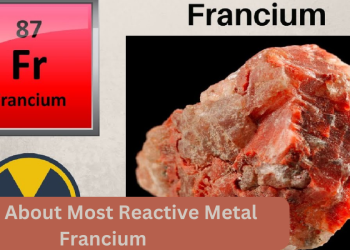Science fun is unlikely but real. We encounter science everywhere we go and everything we do. It is a fact that adults may notice but not the children who are yet to unfold the mysteries of the world. As they start their learning journey, science can answer countless questions they are eager to explore. Introducing students to science education not only enhances their critical thinking skills but also fosters a curiosity that will benefit them throughout their academic, professional, and personal lives.
Why making science fun is important?
From scientific studies, it is proved that children start exhibiting their curiosity towards science via their learning experiences from the age of 11.
Creating a fun classroom environment does more than just capture students’ attention. Research indicates that fun activities boost brain activity and trigger the release of dopamine and oxytocin. This creates a positive feedback loop that helps students connect learning with enjoyment and positive feelings, which enhances their performance and motivation both in school and beyond.
Methods to Communicate Science Fun to the Kids
To make science fun, our strategy is simple. That is inspiring our children to actually involve in science through activities instead of only reading about it for study purpose. Motivate your child or student to ask questions, do science activities, act on interest and look for answers wherever something puzzles them. The better we can train them, the best they will love science and grow up to be a generation of independent thinkers and doers. Motivate them to explore. This is a hell of a big job but if you can do it, they will be hooked for life. How can you do it?
Youth-friendly and easy-to-read science books:
Not all students benefit from simply sitting through lectures in a classroom. While some students grasp concepts through listening, others learn better by engaging directly with science experiments or through reading.
Reading is a valuable resource that enables students to explore and revisit material at their own speed. To accommodate different learning styles, consider integrating handouts and worksheets into your lessons. For an additional boost, you might introduce age-appropriate science books into your classroom.
Many excellent science books cater to various ages and skill levels. You could request your school library to include science picture books, suitable encyclopedias, or science adventure books. This way, students can delve into science topics at their own pace, outside the constraints of the traditional classroom setting.
Classroom Experiments
When planning an experiment, choose an activity that allows your students to actively participate! Observing an experiment can be a valuable learning experience for students of all ages. However, involving students directly in the experiment is even more effective than providing them lesson only. Hands-on activities engage multiple senses—touch, taste, smell, and hearing—which helps create stronger neural connections and enhances comprehension.
There are many online resources available to help you design interactive experiments. Younger students will enjoy activities like making slime, creating baking soda volcanoes, or launching CO2 rockets. These experiments involve active participation and can easily be integrated into your science curriculum. If you’re seeking ideas, consider using pre-packaged classroom kits that provide all the materials needed for engaging hands-on experiments. Children are by default curious to explore unknown, discovering the wonders of science will be a new play game to them.
School Incursions and Fair
External experiences offer some of the best learning opportunities for students. Organizing a field trip to a local zoo, museum, or garden can greatly enhance your students’ interest in science! If you are a parent, take your children to places where they will enjoy scientific exhibitions, science fairs and festivals. If you are a teacher, invite the organizations that work on science related projects and exhibitions. For example,
There are numerous places you can visit, but some of our top science excursion ideas include:
- Science museums
- Aquariums
- Zoos and wildlife reserves
- Botanical gardens
- Farm or agricultural tours
- Planetariums
These excursions are excellent for combining enjoyment with real-world learning activities that reinforce your curriculum. If spending extended time outside the classroom isn’t feasible, consider arranging a science incursion instead. Incursions involve teams that visit your school to conduct classes, demonstrations, and experiments. They are a fantastic alternative to off-campus trips, particularly for illustrating complex concepts that require specific experiments.
Science incursions offer engaging experiments and experienced presenters who know how to make science enjoyable, making them ideal for students of all ages!
Organizations Putting Efforts Together to Make Science Fun
A chance to participate in real science will actively grow interest!
Definitely engaging in real research or projects will motivate the children to apprehend the excitement embedded in science. There are many children focused agencies worldwide offering STEM program both offline and online for the children to ignite their science passion. They use age friendly curriculum/modules, science exhibition, and hands-on demonstration of scientific materials. If you are a parent or teacher, check some of these organizations doing wonderful work for the children:
- Science Fuse: This Pakistan based agency follows “learning by doing” approach to formulate an interactive, innovative science learning program for the children and adult. Science Fuse also provides age-friendly, relevant STEM programs to the interested platforms tailored to their capacity and necessity. Check their site for more information on their learning resources.
- Trickster Theatre: This performing art focused nonprofit offers workshops and short play on science learning for audience of different age groups including children. Using physical theater as a learning approach, Trickster engages the audience to informative content. For example, children get to know serious staffs about science through science storytelling. This organization is based in USA yet takes road trips all over the country.
- KidsatScience Foundation: This USA based non-profit organization works with the schools, districts and particular communities in collaboration to promote research based science education for children.
Cultivate curiosity in young minds. Make science a fun experience
Summing up, increasing science literacy at young age is important given that early exposure to science enhances the mind growth better. However, choosing a fun way to do that is the challenge here, but not impossible. In fact, many of these organizations mentioned above are doing an incredible job in keeping the passion for science lit among the children. Following in their footsteps, to make science fun, most interactive and engaging methods are to be used in place.




















